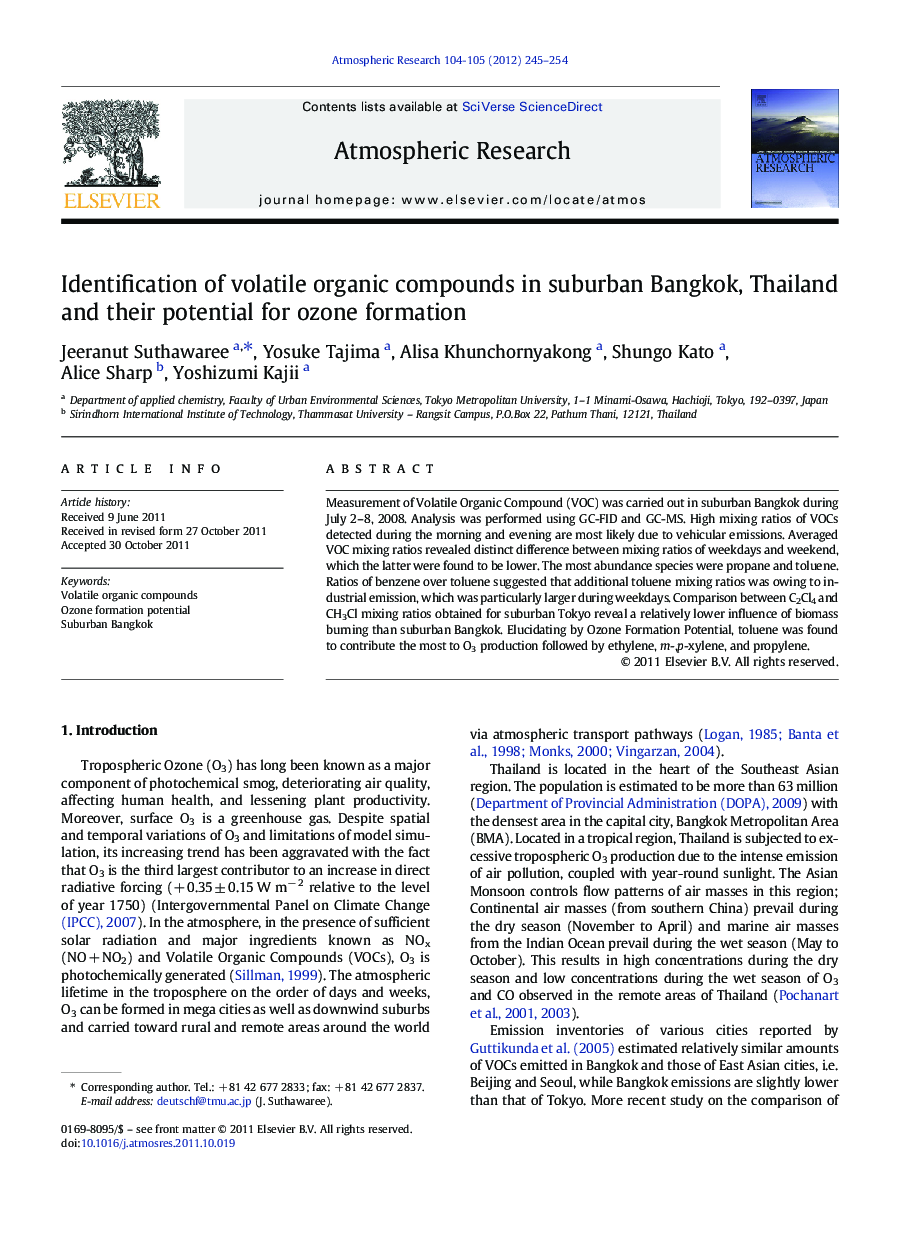| Article ID | Journal | Published Year | Pages | File Type |
|---|---|---|---|---|
| 6344085 | Atmospheric Research | 2012 | 10 Pages |
Measurement of Volatile Organic Compound (VOC) was carried out in suburban Bangkok during July 2-8, 2008. Analysis was performed using GC-FID and GC-MS. High mixing ratios of VOCs detected during the morning and evening are most likely due to vehicular emissions. Averaged VOC mixing ratios revealed distinct difference between mixing ratios of weekdays and weekend, which the latter were found to be lower. The most abundance species were propane and toluene. Ratios of benzene over toluene suggested that additional toluene mixing ratios was owing to industrial emission, which was particularly larger during weekdays. Comparison between C2Cl4 and CH3Cl mixing ratios obtained for suburban Tokyo reveal a relatively lower influence of biomass burning than suburban Bangkok. Elucidating by Ozone Formation Potential, toluene was found to contribute the most to O3 production followed by ethylene, m-,p-xylene, and propylene.
⺠Volatile Organic Compounds is measured at Suburban Bangkok, Thailand. ⺠VOC mixing ratio is determined, reported, and compared with suburban Tokyo data. ⺠Identified influential factors are emission from vehicular, industrial, and biomass burning. ⺠Potential to ozone formation of different VOC species is estimated.
